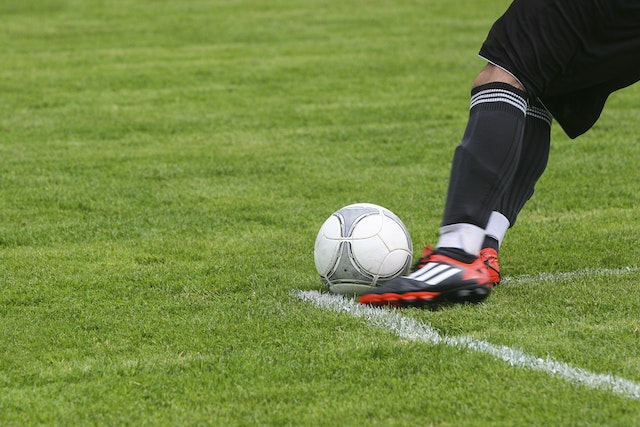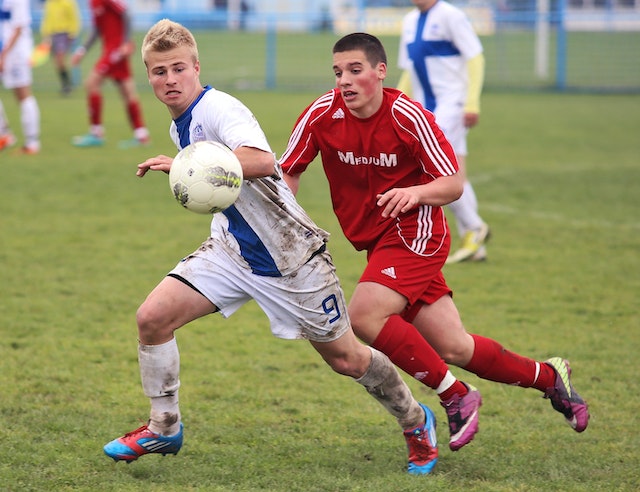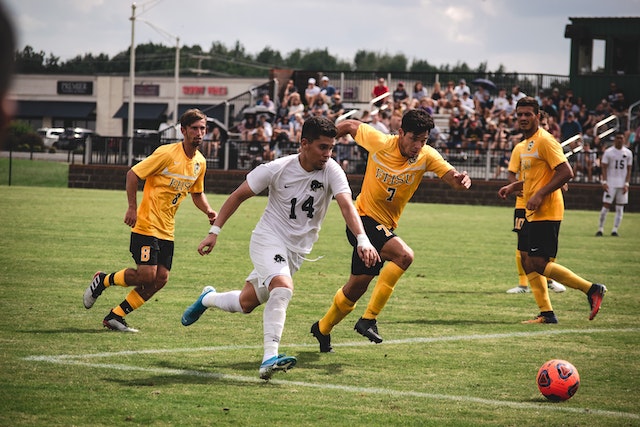We all know that soccer warmups are important — that’s a known fact.
…But just because we should be doing it doesn’t mean that we love to do it. Or, that we’re actually diligent about it like we should be. After all, warmups don’t take much time, and they’re easy to shrug off when you just want to dive straight into your training.
Here’s the thing, though: if your warmups are specific and dynamic enough, it could decrease your risk of injury by 30-50%.
Sounds too good to be true, right?
Well, there’s loads of data to suggest otherwise! Research has shown how soccer-specific warmup programs can provide substantial benefits to athletes.
Let’s review what factors most commonly cause soccer injuries in the first place and what warmups you can do to combat that injury risk in the long run.
Injury Rates in Soccer Players
As you know, soccer is a highly dynamic sport that places a lot of physical demand on your lower extremities. Due to the nature of soccer, more soccer athletes sustain injuries compared to those who play basketball, rugby, or field hockey.
Studies often categorize soccer injuries based on how the injury happened — and according to Hawkins and Fuller, 59% of cases were “non-contact” injuries, and 39% of all injuries happened while athletes were running, jumping, shooting, or turning.

These findings have a clear correlation with the way athletes warmup before practice or during pre-season training. In most cases, there is very little attention given to jumping, running, or turning techniques. Even some local soccer parents that we know have noticed that there’s hardly any time spent on proper functional movements associated with these essential soccer movements.
Given the data, this is a major training pitfall!
In general, younger soccer players should be taught the proper techniques for mastering lower extremity control. This becomes doubly important with complex, dynamic movements that require quick but accurate movements across multiple muscles and joint structures. (But, more on that later.)
Hawkins and Fuller specifically spoke to these training needs in their article:
“The high level of muscle strains, in particular, indicates possible weaknesses in fitness training programmes and use of warming up and cooling down procedures by clubs and the need for benchmarking players’ levels of fitness and performance.”
Additionally, the two most common areas for injury (in both male and female collegiate athletes) are in the ankle and knee. Once again, although these joints are prone to injury, most young athletes are not advised to perform specific drills that target ankle strengthening, balance, or stabilization. These exercises are often only suggested after an athlete has already sustained an injury.
One final consideration is that most soccer injuries occur during actual game play, rather than training or practice sessions. Which makes sense, since athletes will often push themselves harder during game play and have to adapt to less predictable movement patterns. (Be sure to keep this in mind as you start implementing warmups into your routine; it’s not something you can skimp out on before games!)
Soccer Injury Risk Factors
Now that we know how and when soccer injuries tend to happen, let’s dig into the why.
There have been countless studies over the years that have tried to pinpoint this exact question. And ultimately, there isn’t just one “smoking gun” or singular cause behind soccer injuries — there are so many variables that can affect an athlete’s movement.
However, there are a few key variables correlated with increased injury risk…
As stated previously, non-contact mechanisms make up a large percentage of all soccer injuries. Therefore, faulty or inefficient internal biomechanical mechanisms must be involved.
Here are some of the most common biomechanical faults associated with lower extremity injury risk…
- Poor gluteal activation and strength
- Increased knee collapse (genu valgus)
- Increased pelvic drop
- Poor core strength
- Poor dynamic hip and knee control
- Poor dynamic balance
- Decreased pre-season conditioning
While all of these factors have an impact on an athlete’s injury risk, that first issue of glute activation and strength is the most relevant. This is namely because the functionality of the glute muscles have been linked to all the other risk factors listed — a strong buttocks is essential for soccer athletes.

Unfortunately, with our experience working with soccer athletes of varying levels, very few have had adequate gluteal strength when coming to work with us. This has often been the primary cause behind their pain and injury, often in combination with one of the other risk factors listed here.
But on the plus side, when we provide them with an intensive program for building gluteal strength and control, they’re able to return to play with more confidence and power in their movements!
All of this is to say that we already know how and why so many soccer players sustain injury… so why aren’t we more proactive about combating the issue?
Gluteal strength and dynamic lower extremity control HAS to be a part of sports education in youth athletes. However, many teams or training programs lack this level of specificity because they don’t have the exact right personnel to carry out proper screenings.
This is where external expertise comes into play: physical therapists and athletic trainers are excellent resources to provide movement assessment and training! (Plus, they can help set up community-based programs to help educate soccer coaches to implement the same approach.)
So, what can soccer coaches do NOW to substantially reduce injury rates for their athletes?
The FIFA 11+ Dynamic Warmup
When it comes to seeking sport-specific guidance, why not turn to the pros?
An expert group at the FIFA research division have already created an ideal, dynamic warmup program for soccer athletes! And the best part is that it’s specifically designed to combat injury risk for athletes of all calibers.
Some people are intimidated when they learn that the program was created by FIFA, thinking that they’re unable to match the level of pro soccer players.
But here’s the good news: the program is shockingly simple. (And you can access it here!)
Using a series of running drills, core strengthening exercises, and sport specific movements, the FIFA 11+ warmup helps athletes practice motor control actions specific to soccer. It also addresses hip and core strength, both of which are significant risk factors in lower extremity injury.

This program has transformed the landscape of soccer injury prevention. Not only has it necessitated movement training for all soccer athletes, but it’s also quite accessible in that it doesn’t require specialized equipment (all you need are some cones and a ball!).
And if you want hard numbers about how effective it is, look no further…
According to multiple studies, the rate of injury decreased between 21-71% for soccer players! (And that was only after 1 season of sticking with the program!)
Because this program was specifically built to reduce injury risk, it’s been found to be more effective than traditional soccer warmup programs. Results were even further improved when the program was administered by an athletic trainer or trained personnel, too.
Final Thoughts on FIFA 11+
Based on the data shown here, implementing soccer-specific, dynamic warmups is imperative to protecting our youth, high school, and collegiate soccer players from unnecessary injury. A no-cost, simple, and effective program exists, and it should be taken advantage of!
Getting youth athletes physically prepared for each sports season will also help reduce their risk of injury. Screening tools such as the Functional Movement Screen (FMS) and Y-Balance Test will help to screen athletes at risk of injury.
Getting your athlete in a specifically designed strength and conditioning program to address gluteal weakness and dynamic lower extremity control will help prepare them for the rigors of season play.
